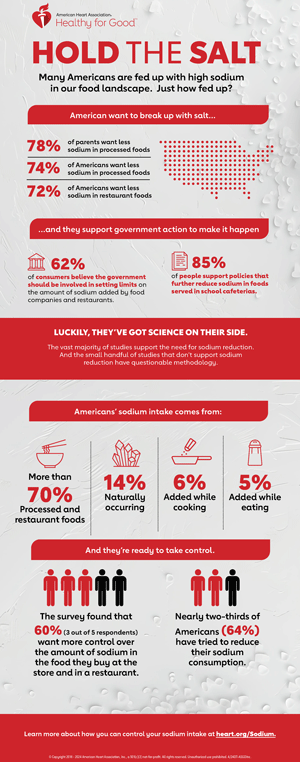Hold the Salt Infographic
Many Americans are fed up with high sodium in our food landscape. Just how fed up? See for yourself with our most recent consumer survey insights.
Americans want to Break Up with Salt…
- 78% of parents want less sodium in processed foods
- 74% of Americans want less sodium in processed foods
- 72% of Americans want less sodium in restaurant foods
And they support government action to make it happen.
62% of consumers believe the government should be involved in setting limits on the amount of sodium added by food companies and restaurants.
85% of people support policies that further reduce sodium in foods served in school cafeterias.
Luckily, they’ve got science on their side.
The vast majority of studies support the need for sodium reduction. And the small handful of studies that don’t support sodium reduction have questionable methodology.
Americans’ sodium intake comes from:
- Processed and restaurant foods – more than 70%
- Naturally occurring - 14%
- Added while cooking - 6%
- Added while eating - 5%
And they’re ready to take control.
The survey found that 60% (3 out of 5 respondents) want more control over the amount of sodium in the food they buy at the store and in a restaurant.
Nearly two-thirds of Americans (64%) have tried to reduce their sodium consumption.
Learn more about how you can control your sodium intake at Heart.org/sodium.

View or Print Infographic
Hold the Salt (PDF)

